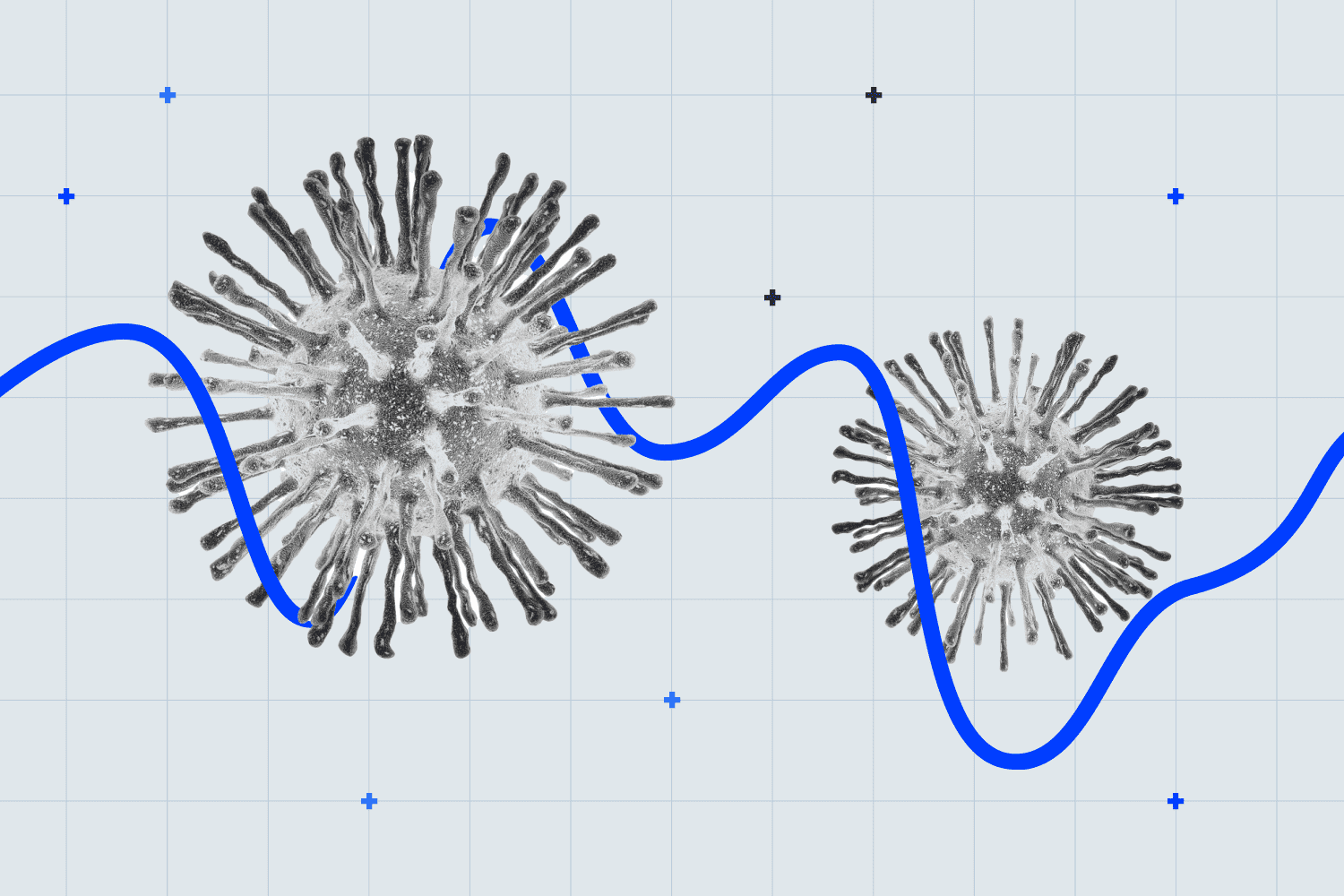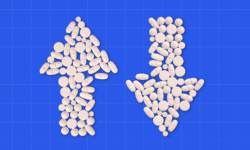With artificial intelligence (AI) revolutionizing every industry, new forms of intelligence have emerged: real-world data (RWD) and real-world evidence (RWE). Within the healthcare space, these developments are driving major investments from large-scale pharmaceutical companies and health organizations. But what are RWD and RWE, exactly?
Real-world data is data relating to patient health status and the delivery of health care routinely collected from a variety of sources. In other words, it’s data that comes from outside the clinical research setting—including electronic health records, disease and product registries, claims and billing data, as well as data from “wearables” and health monitoring devices. Real-world evidence is the product of analyzing the above types of data.
Related Reading: Digital Healthcare: Leveraging Patient Data with Generative AI
RWD is drumming up palpable excitement within the industry, as evidenced by the over 10% increase in documents mentioning “RWD” over the last 90 days within the AlphaSense platform. But what opportunities do RWD and RWE hold for pharma and healthcare companies? Below, we dive into the key use cases for these new forms of data, existing sources for RWD, and the growth of RWE clinical trials.
Real-World Data Use Cases
Since the FDA issued its guidelines on real-world evidence in January 2022, executives have been strategizing how their organizations should invest in RWD. There are a variety of applications for RWD in the healthcare and pharma industries, though there are concerns about how changing regulations could affect the quality, validity, and reliability of the data.
Top use cases include:
Drug Development and Clinical Trials
RWD can be helpful in identifying and recruiting eligible participants for clinical trials by analyzing sources like electronic health data, claims data, and social determinants of health. It can also be used to monitor drug safety and efficacy in diverse populations after market approval through observational studies. Finally, RWD can help inform the feasibility, design, and efficiency of clinical trials by answering questions related to the patient population of interest, disease progression, and healthcare utilization.
Real-world data [and] real-world evidence is becoming extremely important, especially more so in the R&D side of looking at clinical trials and leveraging real-world data to look at alternate indications or even accelerate a study.”
– Former President of EVERSANA | Expert Call
Market Access and Pricing
RWD can inform value-based pricing models by demonstrating real-world effectiveness and cost-efficiency of treatments. It can also help identify disparities in healthcare access and outcomes across demographics to inform policy.
You might know that if your drug is already in the market, you might be seeing that this drug reduces the healthcare utilization by experts. Initially, you might have said that okay, you might have done your initial calculations or projections that this reduces the healthcare utilization. There may be a product which reduces any relapse. It reduces any emergency visits or any costly procedures by 20%, and you might have only accounted for, say, in your discussions or negotiation by only 10% or so. The impact of this is going to be huge.
That allows you to really understand what happens to the patients after they take your medication, along the lifetime journey, how long are they staying on the medication. You might say that the patients are typically prescribed this product only for six weeks, but the doctors may be prescribing for ten weeks or something like that, and so on. Some of them, it may be covered, it may not be covered so you can go and better negotiate with the patient, with the insurance providers.
Many times the insurance providers also ask for real-world data, because something that you have demonstrated in your clinical trial may not generalize to the real-world population. They always ask for what would happen beyond the duration that is described in the label and the type of population. To understand all of that, we need to have long-term data and that gives you a real situation on the ground and so on. Those things go into the economic modeling, which decides the pricing as well as negotiations with the PRs in the U.S., HPA bodies in the Europe, and various regional bodies across the globe.”
– Former AI Expert at Open AI | Expert Call
Related Reading: Generative AI in Insurance
Artificial Intelligence in Healthcare
RWD can be used to train AI models, which can then identify patterns and make predictions much more effectively than a human can. For example, RWD can be used to train a model on recognizing patterns indicative of early-stage diseases. These models can then forecast disease progression and treatment outcomes based on historical data.
That is, again, in the context of that particular question being asked. With the advent and the progress in machine learning artificial intelligence, we are now able to convert this data at scale across a large number of patients, providers, EMR, EHR systems to enable a much more systematic data, which can be used for many different purposes across…
Other things that are happening is using generative AI. People are beginning to generate synthetic data. Just because we have a large number of samples, sometimes millions of patients and so on, suffering from common diseases like diabetes and so on, which are comorbidities, several other diseases. You are able to generate data, although the underlying data may not have been that good quality, but just because it is large samples, we are able to generate synthetic data, which may be much higher quality.”
– Former AI Expert at Open AI | Expert Call
Patient Monitoring and Engagement
RWD can be used for chronic disease management by leveraging wearables and remote monitoring data. Conditions like hypertension, diabetes, and COPD, to name a few, can all be managed remotely through data monitoring. RWD can also be used to monitor patients on a macro scale—using claims data and pharmacy records to analyze medication adherence trends and treatment outcomes based on populations. This can lead to better intervention strategies and policies to improve patient outcomes.
Another study we involved, two years ago, we published a feasibility study where we enrolled some digital clinical trials using the wearable device to collect patient data passively, so where we build AI model, including the daily activities and the body impedance and the sleep data to assess the pregnancy complications, particularly during the antepartum. The most time, when we identify the preeclampsia, for example, it’s quite late. We can do nothing about it, so we early identify at least to better monitor the patient care.
This is what I can think for using the AI model on real-world data, so to help healthcare and also help the commercial need.”
– Bioinformatic Expert at Icahn School of Medicine at Mount Sinai | Expert Call
Existing Databases of RWD
A myriad of databases have emerged that collate the growing volume of RWD, including physician and patient survey data, costs, medications, and procedures, laboratory results, and outcomes, as well as demographic and socioeconomic status. While capital is being funneled into establishing new databases, there’s a slew of existing RWD databases that sector leaders can take advantage of:
- The Sentinel Initiative: This is the FDA’s national electronic system which has transformed the way researchers monitor the safety of FDA-regulated medical products, including drugs, vaccines, biologics, and medical devices. In response to the FDA Amendments Act (FDAAA) of 2007, the FDA launched the Sentinel Initiative in May 2008.
- The Electronic Health Records for Clinical Research Project (HER4CR) Project: HER4CR is aimed at improving the design of patient-centric trials through a platform that provides access to existing patient electronic health record systems (EHRs). Launched in 2016, HER4CR enables scientists to find suitable candidates for trials by searching millions of EHRs throughout Europe while maintaining patient privacy.
- PatientsLikeMe: This is an online platform where hundreds of thousands of members get advice for their conditions from fellow patients, compare treatments, symptoms and side effects, and track their own personal health data in real-time.
- The Accelerated Cure Project Repository: This is a massive collection of biological samples and data from people with MS, to help researchers and hopefully lead to new breakthroughs.
Emerging Challenges of RWE and RWD
Researchers are finding that real-world data and evidence pose challenges in their utilization, ranging from data privacy and standardization to the need for advanced analytics. Ultimately, interpreting vast datasets requires a nuanced understanding of both technology and clinical context—a reality that most pharma and healthcare entities are actively grappling with today.
Some of the main challenges include:
Data Regulation Compliance
Healthcare entities must adhere to regulations like HIPAA and General Data Protection Regulation (GDPR) to address data privacy. For example, when analyzing patient data from EHRs, companies must anonymize the data to comply with HIPAA by removing any identifying information. Similarly, under the EU’s GDPR, companies must obtain explicit consent from patients before using their data, ensuring transparency about data usage.
Data Quality and Integrity
Certain RWD sources may contain errors, omissions, and inconsistencies. Data may also reflect biases that could skew results. Developing common data collection and analysis standards through industry-wide dialogue is crucial for data quality and integrity.
For instance, the use of common data models like OMOP is gaining traction, harmonizing diverse data sources and ensuring consistency and reliability in RWE studies. Healthcare companies should actively participate in shaping these standards to align with clinical needs and research objectives.
Regulatory and Ethical Constraints
Regulatory bodies like the FDA and EMA require clear methodologies and robust evidence to accept RWD-based insights, especially since RWD can be prone to inaccuracy. Also, it’s important that patients provide informed consent in order for their data to be used in research or analysis, and ethically, there are concerns about using patient data for commercial purposes without fair compensation or benefit sharing.
For this reason, it’s important to establish a framework that defines clear ethical guidelines for the collection and use of RWD. Additionally, it may be worthwhile to utilize multidisciplinary governance boards to oversee RWD initiatives within a healthcare or pharma entity.
Understanding the Data
Interpreting complex datasets requires a blend of technology and human expertise. Healthcare companies should build teams proficient in data science and clinical practice. Establishing multidisciplinary teams of data scientists, clinicians, and ethicists can ensure projects are technically sound, as well as ethically and clinically relevant.
Never Miss an Industry Development
In a rapidly shifting industry, having access to timely insights is only part of the equation. You need AI search technology to help you speed up your ability to uncover patterns and key trends so you can better inform your decision-making.
AlphaSense offers an extensive universe of company filings, earnings transcripts, expert interview transcripts, news, trade journals, and equity research—paired with proprietary AI-based search technology—to pinpoint valuable insights in seconds.
Start your free trial with AlphaSense today.





